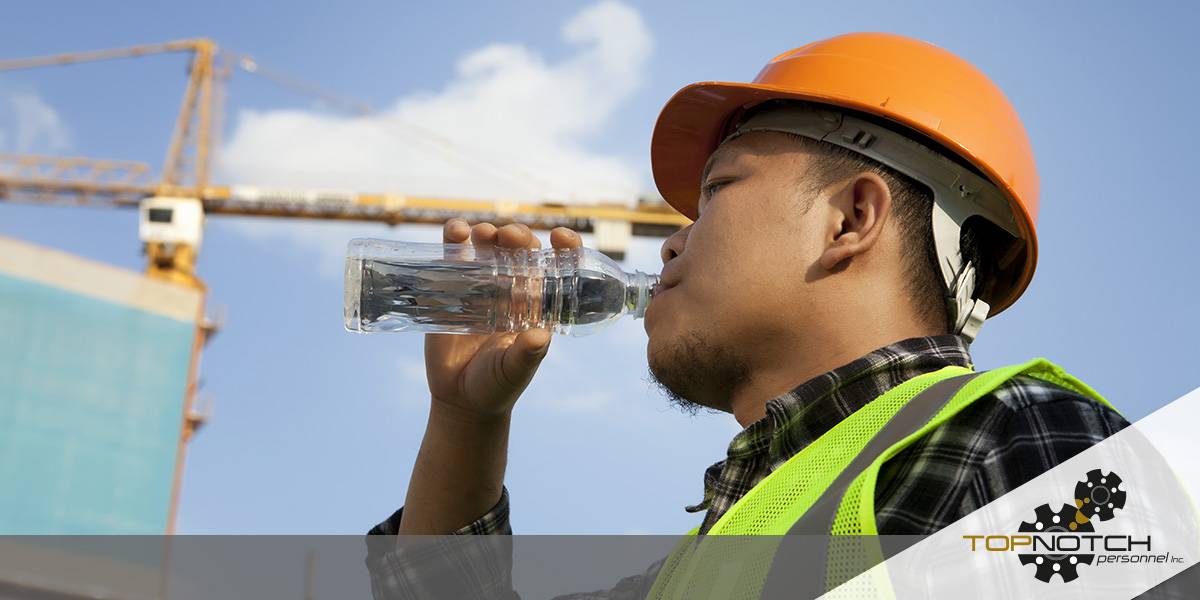Summer, along with the warmer temperatures and longer days that it brings, is upon us. While the blazing sun might make for a great day at the beach, the same doesn’t hold true for those who work outside in the heat, or in warehouses and manufacturing facilities that can become excessively warm during the summer months.
Each year, heat–related stress is the cause of thousands of worker injuries, and unfortunately, some fatalities as well. During this time of year, it’s important that outside workers and anyone who works in an environment with poor indoor temperature control be aware of the dangers of heat–related injuries and know how to prevent them.
The Dangers of Heat Stroke
Heat stroke happens when your body becomes over–heated to the point it loses the ability to self-regulate its temperature. Heat stroke is considered a life-threatening emergency that occurs when the body’s temperature reaches 104°F.
Within minutes, heat stroke can cause serious injury, and if left untreated can result in organ failure. In extreme heat it takes only 15-20 minutes to move from milder heat exhaustion to the dangerous state of heat stroke. Signs of heat stroke include:
-
- Hot, dry skin due to the body no longer regulating temperature through perspiration
- Temperature of 104°F or higher
- Confusion
- Slurred speech
- Agitation
- Rapid heartbeat
- Seizures
- Loss of consciousness
Tips for Staying Safe in the Heat
People who work outside or in excessively warm environments have to take extra precautions to protect themselves from the dangers of working in hot temperatures. Here are five quick tips for staying safe as the temperatures rise.
-
- Hydration: Drink about a cup of fluid every fifteen minutes when working in extreme heat. Caffeinated sodas, energy drinks, and iced teas or coffee don’t count because caffeine has a dehydrating effect on the body.
- Rest: Employers are required by law to take measures protect their workers from heat injuries. Take a break to drink some water, cool off in a shaded area or recover in a temperature-controlled environment.
- Protective gear: Wear clothing that is lightweight, loose fitting and light colored. Hats that shield your face against the glaring sun can help prevent workplace injuries and reduce the risk of sunburn. Keep cooling packs or a cool, damp cloth on hand to frequently cool your skin.
- Don’t overdo it: Yes, there’s a job that needs to be done, but nothing is more important than your health and safety. Worker efficiency usually slows down during extreme environmental conditions, and this is the way it should be. Work at a comfortable, even pace – regardless of any time demands.
- Know the signs: Familiarize yourself with the signs of heat exhaustion and heat stroke, and immediately report to a supervisor or manager if you’re experiencing symptoms or notice signs of heat–related stress in a co–worker.
Want Help Finding a New Job? Contact Top Notch Personnel!
Heat stress doesn’t discriminate between indoor and outdoor workers. Construction and manufacturing workers are often at the greatest risk. Keep yourself safe this summer, and if you’re looking for a new career in construction or manufacturing, we’re the staffing service that can place you with a great company. Check out our job board to see what great opportunities we have available!


